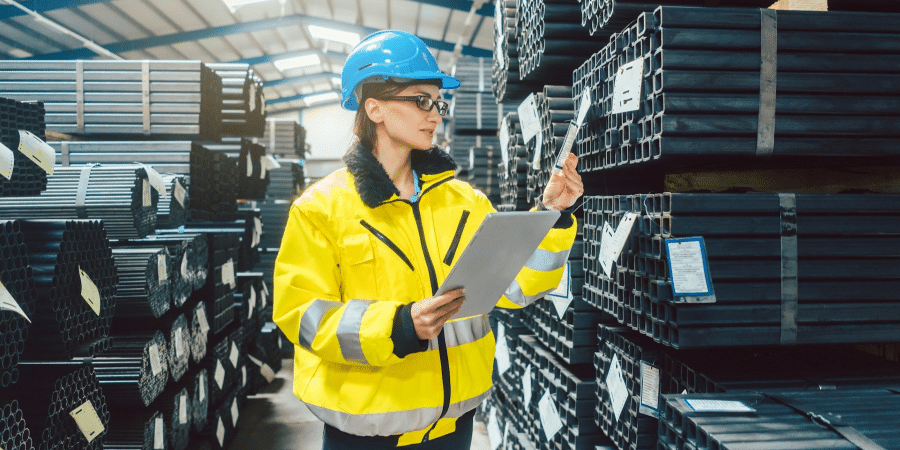Picture this: you roll into the office, grab a lukewarm cup of joe, and settle into your drab cubicle. The fluorescent lights hum overhead, casting a sterile glow on the endless rows of identical desks. You glance around at your colleagues, some slumped in their chairs, others battling the persistent yawn. Not exactly a scene that screams productivity, is it?
Believe it or not, the way your office is designed can significantly impact your mood and, as a result, your ability to get things done. Studies published in a management journal highlight the connection between office environment and employee well-being, showing that a well-designed workspace can boost productivity by up to 30%. That’s huge! So, how exactly does your office environment work its magic (or wreak havoc) on your day-to-day?
Lighting Up Your Mood (and Your Work)
Let’s start with the big one: light. Our bodies are naturally wired to respond to light, and the quality of light in your office can make a big difference. Studies published about productivity found that natural light exposure improves alertness, focus, and even sleep quality. So, ditch the dungeon-like office and try to snag a desk near a window. If natural light is scarce, invest in adjustable lamps that mimic natural daylight. Harsh fluorescent lights can be draining, so consider warmer tones that create a more inviting atmosphere.
Beyond the Buzz: Finding the Noise Sweet Spot
Open office plans might seem trendy, but the constant hum of conversation and clatter of keyboards can be a productivity killer. Research shows that excessive noise disrupts concentration and makes it difficult to complete tasks that require focus. However, silence isn’t always golden either. Some people find complete quiet to be sterile and even unsettling. The key is to find the noise sweet spot. Consider designated quiet zones for focused work and collaboration areas where lively brainstorming sessions can flourish. Investing in noise-canceling headphones or sound-masking systems can also help employees tune out distractions.
From Ergonomics to Aesthetics: Designing for Comfort and Creativity
Let’s face it, hunching over a rickety chair for eight hours is a recipe for back pain and a bad mood. Investing in ergonomic furniture that promotes good posture can make a world of difference. Adjustable desks that allow for standing and sitting throughout the day can further boost comfort and well-being. But it’s not just about physical comfort; aesthetics matter too. Studies have shown that a cluttered or bland office environment can stifle creativity and motivation. Consider incorporating pops of color, artwork, and plants to create a more inspiring and stimulating space.
Beyond the Basics: Fostering Collaboration and Community
A good office environment isn’t just about individual workstations. It’s also about creating spaces that encourage collaboration and interaction. Think designated break areas with comfy couches and coffee tables, perfect for brainstorming sessions or casual chats with colleagues. A well-stocked kitchen with healthy snacks and drinks can also go a long way in boosting morale and fostering a sense of community.
Temperature Tantrums: Keeping Everyone Comfortable
Ever feel like you’re in a constant battle over the office thermostat? There’s a reason for that. Studies have shown that an uncomfortable temperature, whether too hot or too cold, can significantly impact focus and productivity. The ideal temperature seems to be a sweet spot around 72 degrees Fahrenheit. If your office constantly feels like a sauna or a walk-in freezer, talk to your facilities manager about finding a temperature that keeps everyone comfortable.
Air You Breathe: Keeping the Office Fresh
Stale, stuffy air can leave you feeling sluggish and drained. Proper ventilation is key to maintaining good air quality in your office environment. If possible, open windows to let in fresh air, or invest in air purifiers to remove pollutants and allergens. Keeping the office clean and free of dust and clutter can also contribute to a healthier and more pleasant work environment.
From Dull Box to Creativity Hub: It All Adds Up
By taking these factors into consideration, businesses can transform their office environments from dull boxes into hubs of productivity and creativity. A well-designed office that prioritizes comfort, well-being, and collaboration can lead to happier, healthier, and more productive employees. After all, when you feel good in your workspace, you’re bound to do good work. So, ditch the fluorescent lights, swap the rickety chair for an ergonomic wonder, and watch your office transform from a productivity graveyard to a place where your team can truly thrive.
The Human Touch: Plants, Pets, and Personalization
While lighting, temperature, and noise are crucial aspects of a good office environment, don’t underestimate the power of small touches that add a human element to the space. Studies have shown that incorporating plants into the office can reduce stress and improve air quality, making employees feel more relaxed and focused. Think snake plants, ferns, or peace lilies – easy-care options that add a pop of life to the office.
For some companies, allowing pets in the office can be a game-changer. Research suggests that interacting with furry friends can lower blood pressure, reduce stress, and even boost creativity. Of course, this perk requires a pet-friendly policy and responsible pet owners, but the potential benefits for employee well-being are undeniable.
Finally, personalization is key. Allowing employees to add a touch of themselves to their workspace, whether it’s a family photo, a favorite quote, or a small plant, can create a sense of ownership and comfort. This can be as simple as permitting desk decorations or offering a variety of desk chair options to suit individual needs.
Beyond the Walls: Remote Work and the Evolving Office
The concept of a traditional office environment is constantly evolving. The rise of remote work has blurred the lines between the workplace and home, and companies are having to adapt. While there are many benefits to remote work, it’s important to acknowledge the potential downsides for employee well-being and team connection.
For companies with a remote workforce, it’s crucial to create opportunities for virtual interaction and collaboration. Regular video meetings, online social events, and even virtual co-working sessions can help remote employees feel connected and prevent feelings of isolation.
Ultimately, the ideal office environment isn’t a one-size-fits-all solution. The key is to understand your employees’ needs and preferences, and create a space that fosters well-being, collaboration, and, of course, productivity. By investing in a well-designed office environment, companies can reap the rewards of a happy, healthy, and high-performing workforce.






